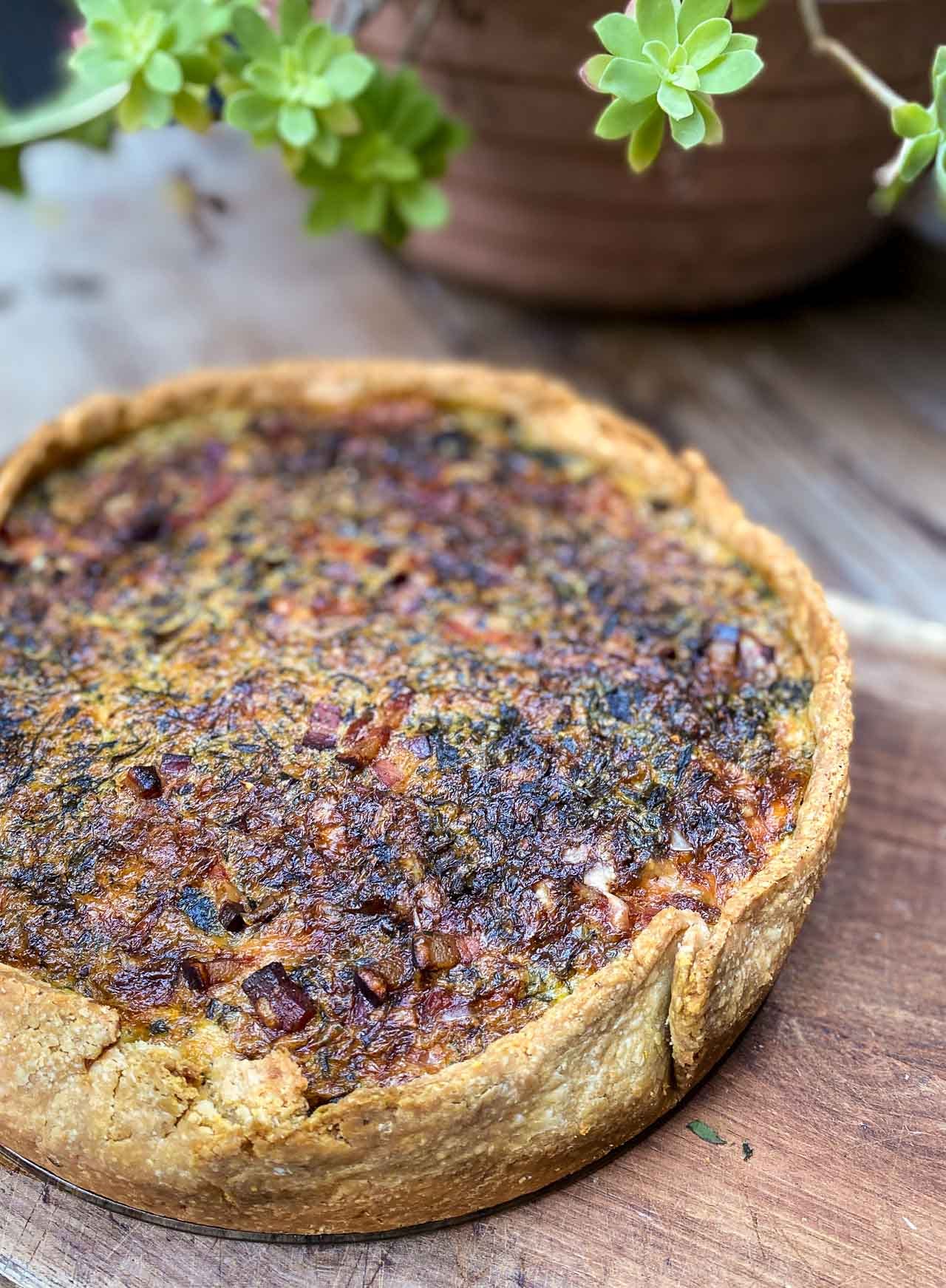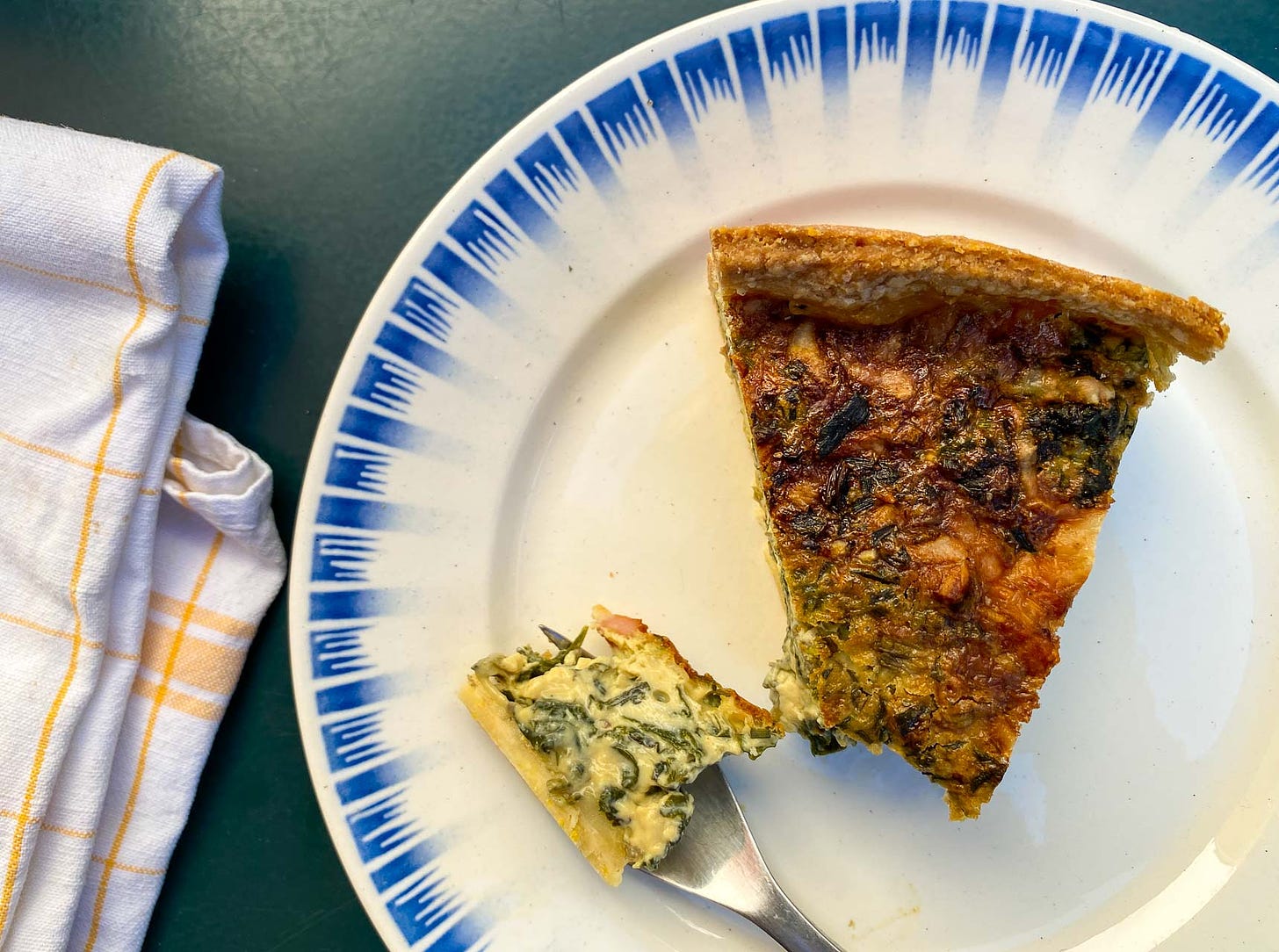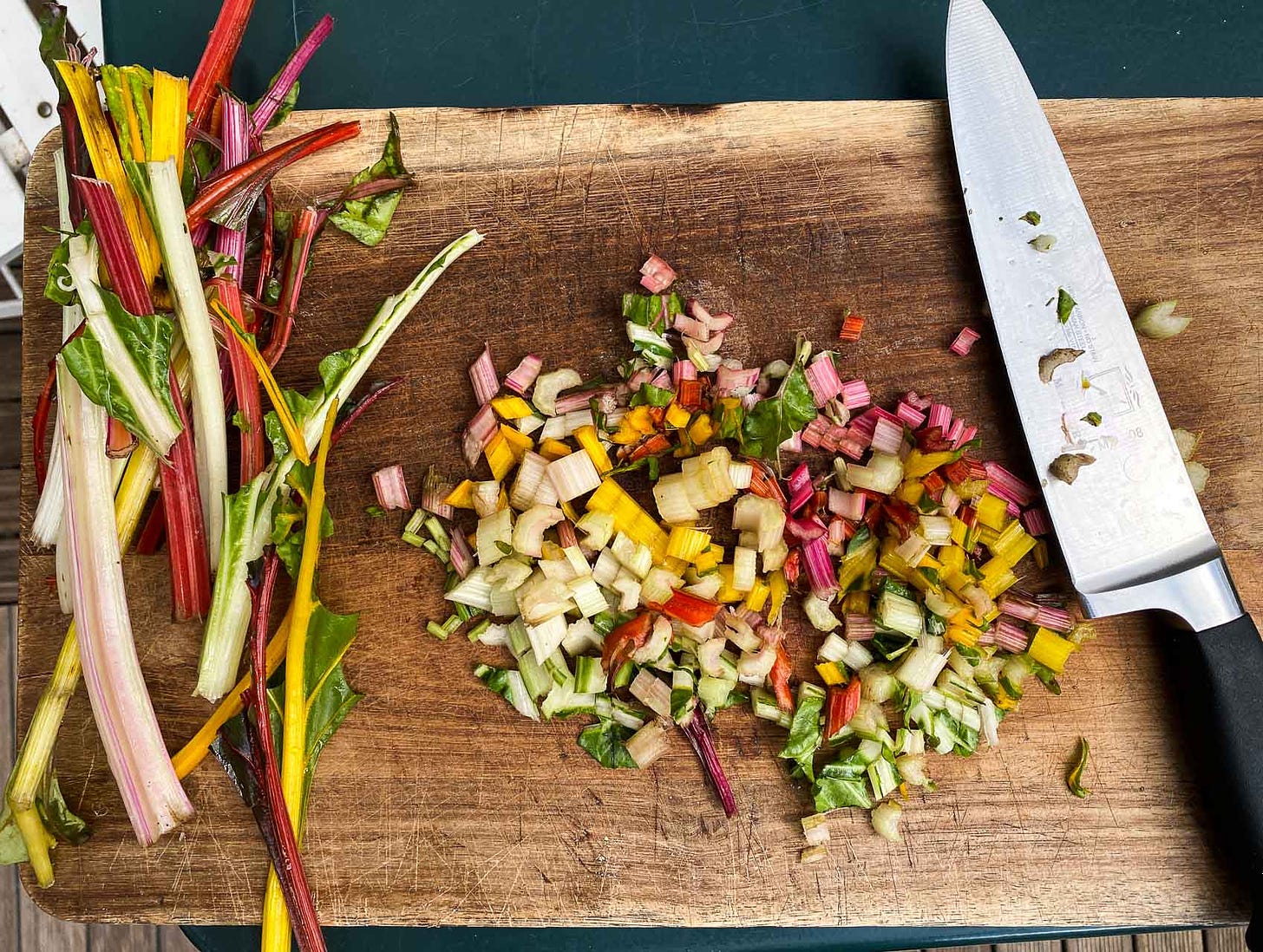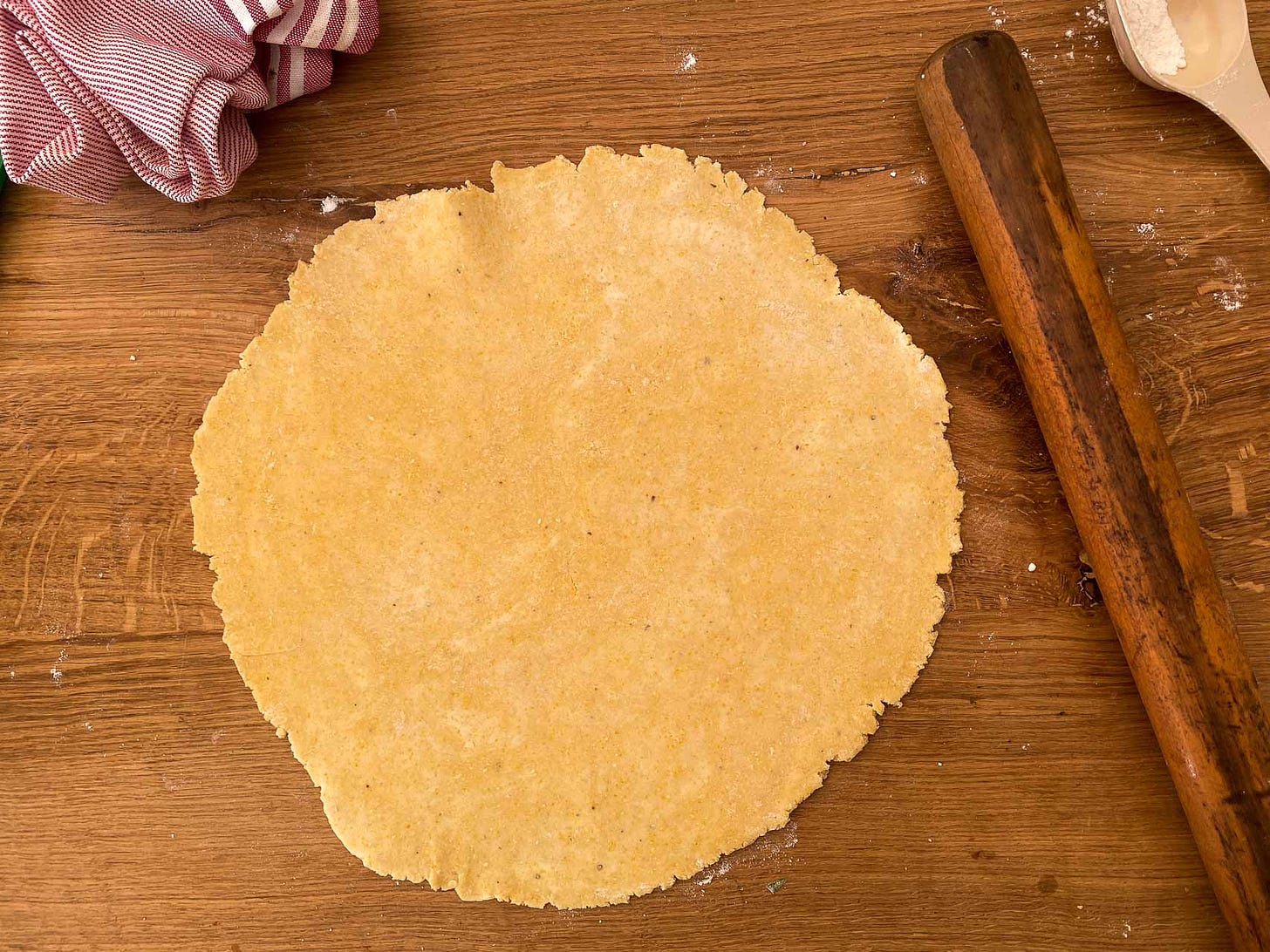A lot of trends come and go in Paris. Some, like Stan Smith sneakers* and not-especially-good mojitos at cafés, have come and (thankfully) gone. The former made me feel like a bunch of hipsters had appropriated my New England adolescence, which was spent in Stan Smith sneakers.
The latter, les Mojitos, were eventually replaced by Aperol Spritzes, which I don’t mind but am ready to see some of the wonderful French apéritifs (such as Cap Corse and vermouth blanc) get more attention by the locals.
(*Stan Smiths became so de rigeur in Paris that there were Tumblr and Instagram accounts documenting their omnipresence. I stopped wearing mine for a while until everyone eventually moved on to uncomfortable vegan sneakers.)
In the U.S., Quiche was a trend back in the ’70s and ’80s. But in France, quiche is just…well, quiche, and thankfully it’s still with us. It’s not uppity, and real men and women eat it, although it’s sometimes called Tarte salée, or savory tart.
A welcome trend that’s hit Paris are épiceries de quartier (neighborhood shops) selling fruits and vegetables from small producers such as Biocoop, La Retour à la Terre, Le Zingham, Au Bout de Champ, and La Main Verte.
One favorite is Terroirs d’Avenir, and a customer was asking someone who worked there, what do you do with rainbow chard? Most of the blettes, or Swiss chard, in France are very large with big, sturdy leaves that need to be cooked quite fully, the way people in France like their vegetables cooked. (People aren’t too pleased when they get cooked green beans that are still crisp, which I’ve heard referred to as “American style.”)
I’m not a huge fan of the oversized Swiss chard, which reminds me of bok choy, another leafy vegetable that’s big on texture. It’s not one of my favorites, and my go-to vegetable in Chinese restaurants is always gai lan, thick-stemmed Chinese broccoli, although when Romain discovered pea shoots, which are prominent in Chinese restaurants in the U.S., he wanted to know why they are impossible to find in Paris. So would I!
I love rainbow chard and decided to turn the bunch of it into a quiche with a variety of cheese odds and ends in my refrigerator. (If you have a lot of cheese scraps in France, a great way to use them is to make Fromage Fort.)
Adding bacon to anything is always a good idea, in my view, but if you’re vegetarian, you can skip it or use a vegan substitute. If you don’t eat pork, you can find poultry-based bacon nowadays, too, even in France.
I was recently doing an online talk with Aleksandra Crapanzano about her book Gâteau, with recipes for the simple cakes French people bake at home. We both noted in France, people add fewer things when they’re cooking to let the main ingredient shine. That’s why cinnamon isn’t added to Apple Cake, and even vanilla isn’t automatically added to baked goods. My own Frenchman, Romain, is not a fan of mixed jams, preferring single-subject conserves, although he allows for Fig-Pineapple.

Another thing the French don’t (usually) do is pre-bake crusts. Americans always go for the crispiest whereas the French opt for convenience, which isn’t a bad thing at all. If you want to pre-bake the crust with pie weights, you are welcome to, although you risk it becoming browner around the edges. But in France, real men and women don’t worry about those things. They just dive in with pleasure.
Swiss Chard Quiche
About 8 servings
You can add any soft herbs that you like to this. I didn’t add them, but two or three minced shallots added with the Swiss chard leaves are a nice touch. In Paris, garlic is used sparingly, if at all, although I do like to make a quiche with wild garlic when it’s in season.
If you’re not into bacon, sautéed mushrooms go well in quiche. Smoked salmon cubes or chunks can also be added in place of the bacon — around 1 cup (~250g).
As mentioned, home cooks in France (as far as I’ve experienced) generally don’t pre-bake the tart dough*, but if you’d like it to be crisp, especially on the bottom, you can pre-bake it. This is the quintessential “Serve with a green salad” dish, which really is the best accompaniment.
For the tart dough
1 cup (140g) flour plus 1/4 cup (35g) cornmeal (or 1 1/4 cups (175g) flour, total)
1/2 teaspoon salt
8 tablespoons (4 ounces, 115g) unsalted butter, cubed and chilled
1 large egg
If making the dough by hand, mix the flour and cornmeal (or just flour) and salt in a medium bowl. Add the cubes of chilled butter and cut them in with a pastry blender until they’re in little pieces, about the size of corn kernels. If using a food processor or stand mixer with the paddle attachment, cut the butter into the flour, cornmeal, and salt, until it’s in little pieces.
Add the egg and mix until the dough comes together. If using a machine, don’t overdo it. Just mix until the dough starts to look like it’s coming together, then use your hands to gather it into a ball. Whichever way you’re mixing it, if it’s too dry, add a teaspoon or two of cold water to bring it together. Shape the dough into a disc, wrap it in plastic wrap or your favorite eco-friendly alternative, and chill for at least 1 hour. (The dough can be made a few days in advance and refrigerated, or frozen if you want to keep it longer.)
To roll and prepare the dough, have a 9- to 9 1/2-inch (23cm) springform pan ready. Butter or spray the bottom of it lightly with non-stick spray. Roll the dough into a 14-inch (36cm) circle on a lightly floured countertop. Fit the dough into the pan, easing it into the corners. Use a paring knife to trim the excess hanging over the top rim of the pan. (You can trim it lower than the rim, but I don’t mind excess crust flopping over the top of the tart during baking. If you have guests that mind that kind of thing…find new guests!)
Freeze the dough in the pan for at least 30 minutes.
[If you want to pre-bake the dough with pie weights, after it’s chilled in the freezer, preheat the oven to 375ºF (190ºC). Line the pan with aluminum foil, fill partially with pie weights and bake until the crust is golden brown. It’ll take between 20 and 25 minutes, but check before those times to make sure all is A-OK. Remove the pie weights and let cool before filling.]
For the filling
1 tablespoon olive oil
5 to 6 ounces (140 -170g) thick-cut bacon, cubed
1 large bunch, about 1 pound (450g), Swiss chard, leaves separated from stems, separately well-washed. (But don’t dry the leaves.) Roughly chop the leaves into 2-inch (5cm) pieces and thinly slice the stems, keeping them separate from the leaves.
2 tablespoons unsalted butter
1/2 teaspoon salt (for the custard) plus additional salt and freshly ground pepper for seasoning the Swiss chard
1 cup (250ml) whole or low-fat milk
1 cup (250ml) heavy cream
4 large eggs, at room temperature
1 1/2 teaspoons Dijon mustard
Scant 1/2 cup (20g) chopped mix of soft, aromatic fresh herbs, such as parsley, tarragon, chervil, dill, basil, chives, and mint in whatever proportions appeal to you
Pinch of cayenne
1 1/2 cups (150g) grated cheese, such as Comté, Gruyère, Emmental, cheddar, or another favorite (feel free to grate in some additional Parmesan, too)
Heat the olive oil over medium heat in a large skillet or pot, one that has a lid. Add the bacon and cook, stirring frequently, until the bacon is cooked through but not crisp. Use a slotted spoon to transfer it to a plate lined with a paper towel to drain.
Pour off the excess bacon fat and add the chopped Swiss chard stems. Cook the stem pieces, stirring frequently, until they’re almost cooked through. If the pan dries out, add a bit more olive oil if necessary.
Add the chard leaves to the pan along with the butter and season very lightly with salt and pepper. Cover and cook, stirring occasionally until the leaves are completely wilted and cooked through. Turn off the heat and set aside until ready to use.
To assemble and bake the tart
First up: Wrap the bottom of the springform pan, and up the sides, in a single sheet of aluminum foil to ensure nothing will leak out. If you need several pieces of foil, set the pan on a baking sheet for baking as extra insurance.
Preheat the oven to 375ºF (190ºC).
In a medium bowl, whisk together the milk, cream, eggs, mustard, herbs, 1/2 teaspoon salt, and cayenne pepper.
If the Swiss chard has exuded a lot of juice, wring it out gently with your hands and spread half of it over the bottom of the dough in the tart pan. Strew the bacon over the Swiss chard, then add the cheese. Top with the remaining cooked Swiss chard. Pour the herb-flecked custard over the chard and bacon and use a spoon to move things around a bit, to make sure the custard is getting evenly distributed among the other ingredients.
Bake until the top of the tart is a nicely bronzed golden brown and the filling jiggles only very slightly when you jostle the pan but doesn’t look or feel liquidy, about 50 minutes. A toothpick inserted into the center should come out relatively clean.
Set the tart on a cooling rack until ready to serve.
*A number of years ago, I wrote online something along the lines of, “People in France don’t eat with their hands.” Being the internet, I forgot to add the word “generally.” (Or, “In many cases…” or “Almost all of…”) Of course, a few months later, someone wrote to me that they were in France and saw someone eating a sandwich with their hands.
(If you’ve ever been to a pizza restaurant or ordered a burger in France, and you pick up your pizza or hamburger to eat it, if you look around the dining room—in many cases—you’ll be the only one doing so.)
So, generally speaking, in some cases, people don’t pre-bake tart shells—at least not in classic French cookbooks such as La Bonne Cuisine de Madame E. Saint-Ange and the more modern Elle à Table, but in other cases, some do. So it’s up to you. 🇫🇷












Speaking of eating hamburgers in France, I once had an American style hamburger birthday party for my husband, and my French friends insisted on eating the burger with a knife and fork, and eating the bun and the relish separately. When I said that the idea was to put the burger in the bun with lettuce, relish and tomato etc. and eat it with their hands, they told me not to be so bossy!
THIS is kismet! I just added chard to my weekly grocery list about 2 minutes before I got this recipe! WOOT WOOT!! And I have a ton of cheeses from Trader Joes. However, don't kill me, but I cannot make pastry. So, instead I use sliced baked potatoes for the crust. I cover with cheese then do the filling/custard. Also get packs of pea seeds now and sew thickly in Feb/March. As soon as the ground can be worked. You can grow your own pea shoots. So good raw, steamed or sauteed. ENJOY!!! Thanks for the recipe!!